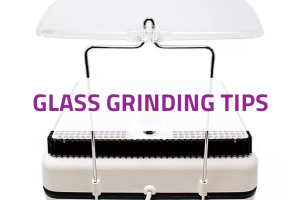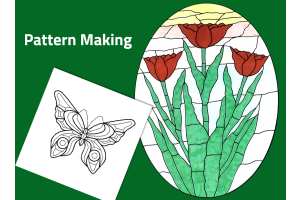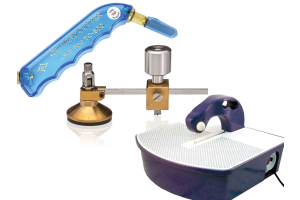We use cookies to make your experience better. To comply with the new e-Privacy directive, we need to ask for your consent to set the cookies. Learn more.
Glass Grinding: 6 Essential Tips for Flawless Results

Glass Grinding: 6 Essential Tips for Flawless Results
Mastering the skill of glass grinding requires finesse, technique, and attention to detail. From ensuring your equipment is properly maintained to perfecting your grinding technique, every step contributes to the quality of your finished piece. In this guide, we'll delve into six indispensable tips that will elevate your glass grinding game and help you achieve impeccable results.
- Ensure Your Grinder Has Adequate Water Supply
One of the most critical factors in successful glass grinding is ensuring that your grinder has a sufficient water supply. Water not only cools down the grinding surface but also lubricates it, preventing overheating and reducing the risk of glass breakage. Before you begin grinding, double-check that your grinder's water reservoir is filled to the appropriate level. Additionally, keep a close eye on the water level throughout your grinding session and refill as needed to maintain consistent lubrication.
- Keep Your Glass Flat and Utilize Two Hands for Optimal Control
Maintaining control over your glass piece is paramount to achieving precise and uniform grinding results. To enhance stability and minimize the risk of slippage, try keeping your glass flat against the grinding surface. Furthermore, utilize both hands when operating the grinder – one hand to hold the glass securely and the other to guide its movement. This two-handed approach provides superior control and allows for smoother, more controlled grinding motions.
- Patience Is Key: Avoid Pressing Hard for Faster Grinding
In the realm of glass grinding, patience reigns supreme. While it may be tempting to apply excessive pressure in an attempt to expedite the grinding process, this can lead to uneven surfaces, chipping, or even breakage. Instead, maintain a steady and moderate pressure, allowing the grinder's abrasive surface to gradually remove material from the glass. Remember, a patient approach yields superior results and minimizes the risk of costly mistakes.
- Employ Reverse Direction Movement for Enhanced Grinding
For optimal grinding efficiency and surface smoothness, consider employing a technique known as reverse direction movement. This involves moving your glass piece in the opposite direction to the rotation of the grinder wheel. By doing so, you can counteract the tendency for the grinder to pull the glass inwards, resulting in more uniform grinding and smoother edges. Experiment with this technique to find the optimal balance between rotation and reverse movement for your specific grinding needs.
- Practice Steady and Consistent Movements for Even Grinding
Consistency is key when it comes to achieving uniform grinding and desired shapes. Practice steady, fluid movements with your hands to ensure consistent contact between the glass and the grinding surface. Whether you're shaping intricate curves or refining straight edges, maintaining a consistent pace and pressure throughout the grinding process will yield superior results. Take your time, focus on precision, and hone your technique through diligent practice.
- Regularly Clean Your Grinder for Optimal Performance
To keep your grinder running smoothly and maintain its effectiveness, make it a priority to clean it regularly. Over time, debris, glass residue, and mineral deposits can accumulate within the grinder, hindering its performance and potentially causing damage. After each grinding session, take the time to thoroughly clean out your grinder, removing any leftover glass particles and sediment. Additionally, periodically inspect and lubricate moving parts to ensure smooth operation and longevity.
By following these six essential tips you will be well-equipped to achieve flawless results and unleash your creativity in the world of glass artistry.










